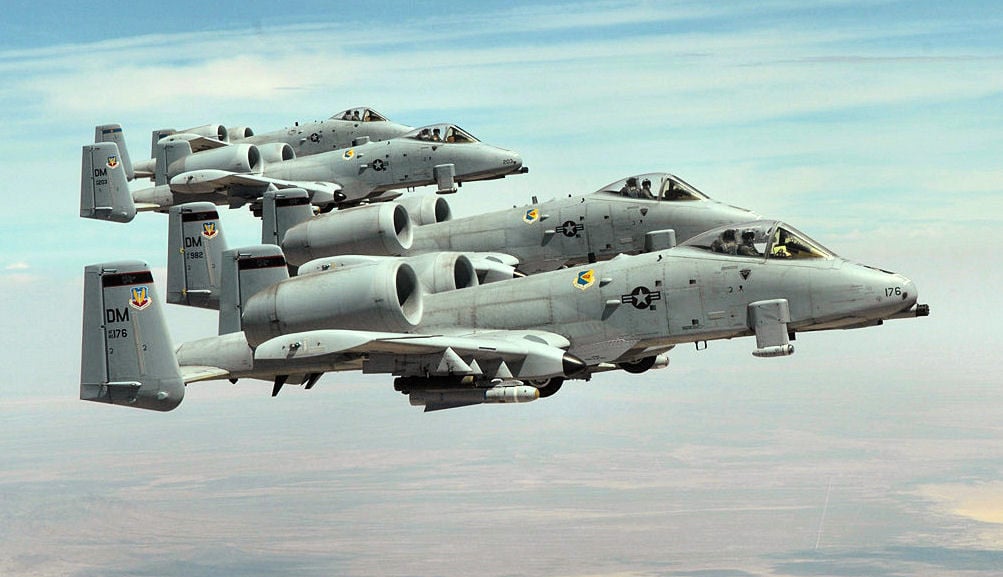The Air Force is committed to providing new wings to the remaining fleet of A-10 Thunderbolt II ground-attack jets, a senior commander said.
That’s good news for supporters of Davis-Monthan Air Force Base, where the A-10 remains a primary mission that employs hundreds of airmen and pumps millions of dollars into the local economy.
At a conference hosted by the Brookings Institution, Air Combat Command chief Gen. Mike Holmes said the Air Force will seek funding in the fiscal 2019 budget to replace wings on about 110 A-10s, whose wings are nearing the end of their useful life.
Amendments tacked onto fiscal 2018 budget bills include $103 million to restart production of new wings for A-10s that would otherwise be grounded without the upgrade.
The 2018 budget is yet to be finalized, but Arizona Rep. Martha McSally, R-Tucson, and other A-10 supporters have been pressing the Air Force, and congressional budget leaders, to ensure the rewinging funding is included in a final budget deal.
“The Air Force knows that the A-10 is a vital asset and critical in the fight against ISIS, the Taliban, North Korea, and Russian aggression in Eastern Europe,” McSally said in a news release Friday. “In fact, the Warthog is currently one of the most utilized aircraft across multiple theaters.”
She noted the Air Force recently deployed a squadron of A-10s — a Reserve unit from Whiteman Air Force Base in Missouri — to Afghanistan for the first time in three years.
McSally, a former A-10 pilot, said Friday she had been in contact with Air Force Secretary Heather Wilson over the past several weeks to urge her to keep the entire A-10 fleet intact and include funding for the wings in their budget request for fiscal year 19.
McSally and Arizona Sen. John McCain, chairman of the Senate Armed Services Committee, have led a fight in Congress to keep the A-10 despite Air Force plans a few years ago to retire the entire 280-plane fleet by 2019 to save money.
The Air Force has extended that retirement timeline, but said last year it would have to permanently ground three of nine A-10 squadrons unless Congress funded new wings for the aircraft. The A-10 was developed in the 1970s to kill tanks during the Cold War but has been continually upgraded.
Though the fiscal 2018 funding to rewing the A-10s is still uncertain amid the stalled federal budget, McSally noted that the funding was included in the 2018 National Defense Authorization Act passed and signed by the president.
In his remarks at Brookings, Holmes indicated that the fiscal 2018 funding would be used for a new rewinging contract, since the contract Boeing was working under to upgrade the A-10s was no longer cost-effective.
“We have money in the current budget that will allow us to reopen a rewing contract,” he said, adding that plans are being made to buy more wings in fiscal 2019.
That means the A-10 will be flying for years, though they will eventually have to make way for new fighters like the F-35 Joint Strike Fighter, Holmes said.
“We plan to maintain the A-10 out into the 2030s, at least,” he said. “And then, we live in a world with a limited budgets, so how many fighter squadrons can we maintain? As the F-35 comes out in 40s or 50s a year, I won’t be able to just add that on top of the squadrons I have, so we’ll have to make some decisions.”





